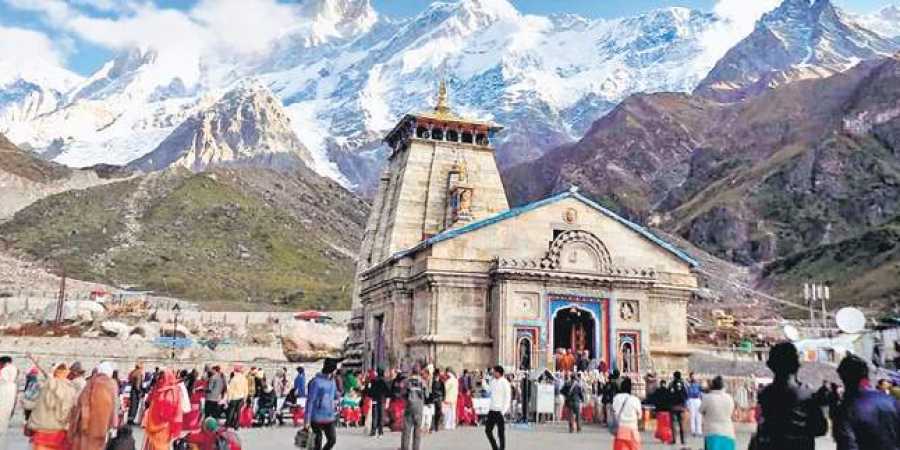Devdutt Pattanaik
Badrinath and Kedarnath are two major centres of pilgrimage in Uttarakhand; both are shut during winter months. Both centres are closely associated with Adi Shankara, the scholar who revived Vedic scholarship, about 1,200 years ago. He was the one who identified pilgrim spots and connected intellectual Hinduism (gyana marga) with emotional Hinduism (bhakti marga). Along with Gangotri and Yamunotri, the traditional sources of the Ganga and Yamuna rivers, Badrinath and Kedarnath form the choti-char-dham, or the minor four-point pilgrimage.
Badrinath, Kedarnath and the entire hilly region of Garhwal are linked to the epic Mahabharata. It is here that local people perform the Pandava Leela that retells the local version of the tale. In this version, after the war, Yudhishtira gives five villages — denied to them by the Kauravas before the war — to five Kauravas: Duryodhana with broken things, Bhurishrava with broken arm, Karna, Drona and Ashwatthama. They are worshipped as local gods. But more popular is the shrine of Shiva and Vishnu established by the Pandava brothers.
After the Pandavas win the war at Kurukshetra, they are filled with remorse and guilt at the act of killing their cousins, and hundreds of soldiers. No amount of intellectual rationalisation and practical considerations, provided by Krishna, helped them cope with the emotional distress. To find peace, the five brothers and their common wife, Draupadi, went to the Himalayas. Here, they found Shiva, in the form of a bull, and sought reprieve from their emotional crisis. But Shiva, the bull, ran and the Pandavas, determined to find a solution, had to chase him. Shiva, the bull, tried to escape underground; but Bhima took hold of his hump and stopped him from disappearing into the earth. This hump became the Shiva-linga worshipped at Kedarnath.
Later, after establishing dharma on Earth, the Pandavas renounced society, and return to the Himalayas. They kept climbing mountains, hoping to find the doorway to Swarga or Indra’s paradise. On the way, they reached a place where they found Vishnu meditating under a berry or Badri tree. This spot is Badrinath. Here, Vishnu also took the dual form of Narayana (the primal teacher) and Nara (the primal student), who later manifested as Krishna and Arjuna. Some historians believe, based on the architecture of the temple, its brightly painted façade that is typical of Himalayan Buddhist viharas, that this was a Mahayana Buddhist shrine before it became linked to Hindu Vaishnavism.
Adi Shankara, in all probability, was familiar with the traditional rivalry between those who worshipped Shiva, and those who worshipped Vishnu. Adi Shankara would have known that Shiva was the hermit who is turned into a householder by Shakti, while Vishnu is the householder whose detached engagement as Ram, the king, and Krishna, the hermit-householder, makes him a hermit. He would have known that Shiva is associated with ash, while Vishnu with water and sandal paste. Shiva is linked to the restless and bubbly Ganga and Vishnu with the forlorn and mournful Yamuna. Vishnu and Yamuna are visualised as black, while Shiva and Ganga are visualised as white.
By connecting the two temples and two rivers linked to rival gods, to his non-dual (Advaita) Vedanta, Adi Shankara was creating a new Hinduism that was world-affirming and connected to local beliefs, that people would prefer over the sombre world-denying Buddhism.
Devdutt Pattanaik writes on relevance of mythology in modern times, especially in areas of management, governance and leadership. Republished by special arrangement.
